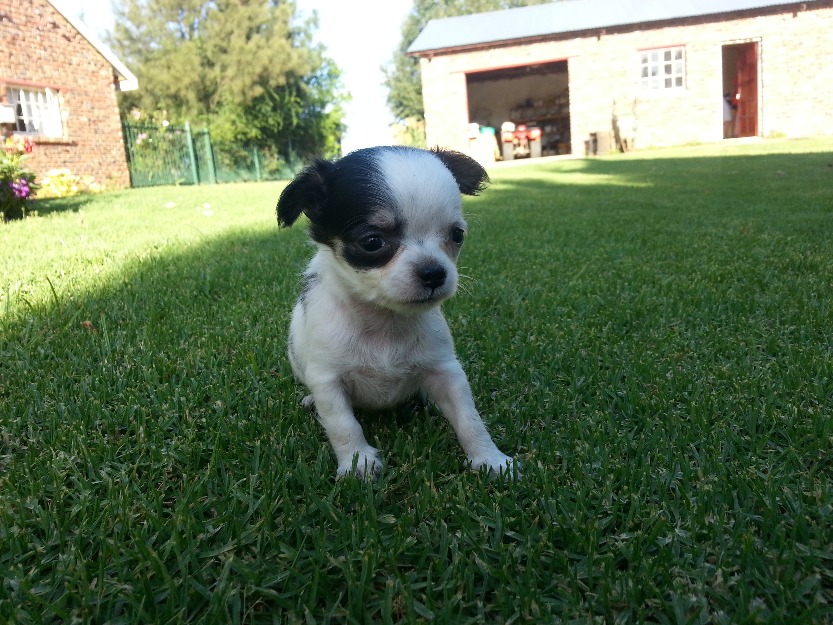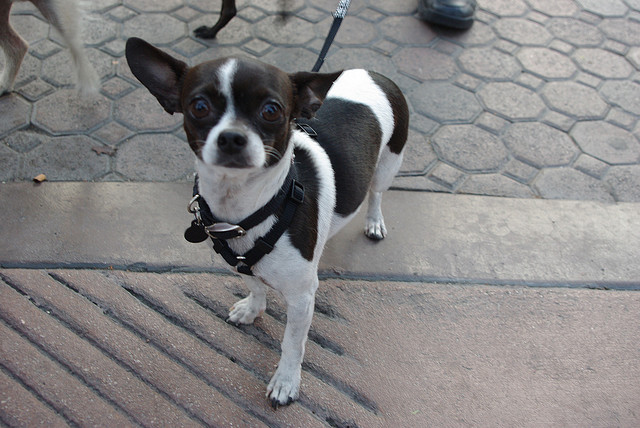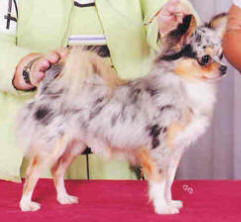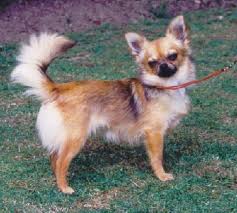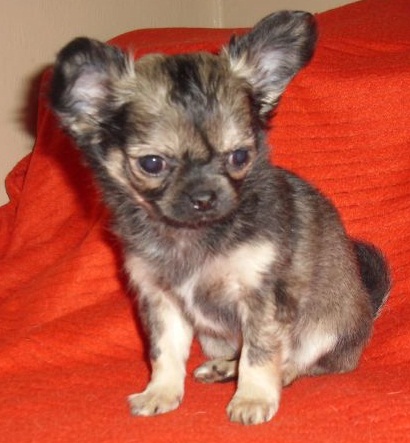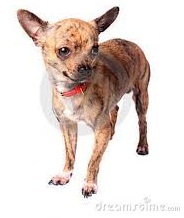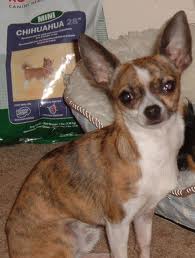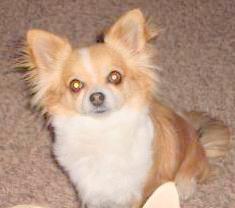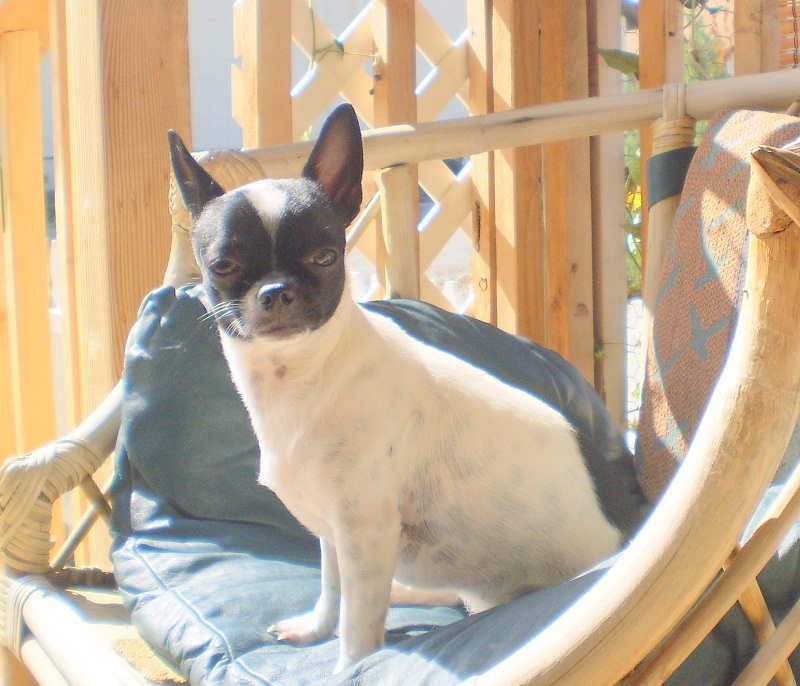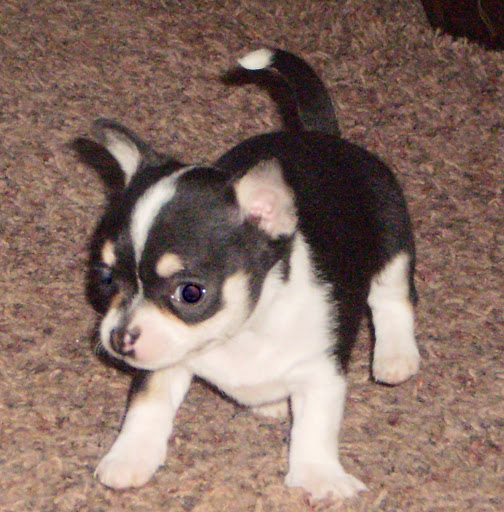Colours are fun! Let's first though discuss leather.
'Leather' on a chihuahua is the colour of it's nose, pads of feet, eye rims, gums, etc on your Chihuahua. Please try to remember a simple fact. TRUE BLUE Chihuahuas have BLUE leather, not black. Chocolate Chihuahuas have Chocolate leather and all others have black.
If you have a "chocolate" Chihuahua with a black nose, it is likely a red, not a chocolate and if you have a "real dark blue" Chihuahua with a black nose, it is almost certainly a black Chi, not a blue one. Pigment should completely cover the nose leather.
When I refer to blue dogs, I mean the blue gene with blue nose that can also occur in the patterns of brindle or merle as well. Same goes for chocolate and all others including standard brindles or merles have a black nose (leather).
Follow me so far?
Tricolour (black, blue or chocolate with tan and white markings) bred to another tricolor will produce only tricolor puppies.
Same goes with two dogs with Irish markings bred together and bicolors bred together.
Merles are always best bred to solid studs, bicolors or tricolors. You should avoid breeding a merle to a fawn, white or spotted on white and NEVER EVER EVER breed two merles together even if you think they are both healthy.
Brindle to Brindle or fawn will usually result in brindles being born and or other colors. Remember brindle and merle are PATTERNS not colors.
BLUE BRINDLE and/or REVERSE BLUE BRINDLE ise the most unpredicatable gene. This colouring may appear when neither parent is either blue or brindle.
Brindling oftentimes (especially in the case of reverse brindle) does not show up right away in the coat colour of the Chihuahua and is commonly not seen until the adult coat starts to come in.
Merles are BORN MERLE evenwhen hidden with only a couple merle hairs on the whole puppy. Their merle may fade over time (particularly in fawns and reds) but will not increase as the pup ages.
Chocolates & Blues are NOT RARE. However, if you have lines carrying dominant colors it is harder for you to pull these colors from your lines. Remember, as with brindle, you must have blue on both sides of the line for blue pups to be born even if that blue gene is a ways back. The blue can be in brindle (standard or reverse), merle, spotted on white or with bi or tricolours.
You MAY breed a chocolate to a blue but these are both dilute colours and breeding them together will almost always dull the colour. You can get blue (if on both sides), chocolate or what are now referred to as lavender or lilac pups which are really just a diluted chocolate.
Now do we wish to start on the markings gee whizz this is going to be fun as there are so many different combinations, So where do we begin and remember not all markings and colours are approved by the show ring but gee if you love your furbaby that is all that matters.
Lets begin !
Splashed: A splashed Chihuahua typically has large splashes of colour over a solid coloured body. Splashes can come in any color, but usually involves white or tan - Black & Tan, Blue & Tan, Fawn & White, Black & Red, etc.
Merle: A Merle is actually not a colour but a pattern of mottled or marbled colours in a dog's coat. Merle's usually have blue or uniquely coloured eye.
Sable: Sable pattern colouring happens more often and more dramatically in long haired Chihuahuas than in short haired ones because it requires an undercoat, although short coats can also have undercoats. A Sable has darker coloured hair in the top coat, and a lighter coloured bottom coat. Sometimes the hair itself is lighter at the bottom and becomes darker towards the top of hair shaft. They usually have a black top
Brindle: A Brindle is a series of stripes or streaks of a darker color than the base coat. It is also called tiger striped. There is a reverse brindle which is just an over concentration of black stripes making it appear black till close examination.
Irish Marked: An Irish Marked Chihuahua is any color combination of a darker color with a white chest, legs, neck ring, and sometimes a blaze. The neck ring does not have to be full ring.
Piebald or Pied:A piebald happens when only the head, a small part of the back, and the base of the tail have colouring the rest will be white. Often times versions of the Piebald are called a Black Mask. The white hair in a Piebald dog happens because the dog's hair has no pigment. The hair that has pigment is usually black, but can be any darker colour.
Tri-Colored: Is a combination of three colors with the major color being black or brown variations along with some shade of tan, showing up around the eyes, ears, belly, legs, tail tip. The white is on the underside of the Chihuahua dog such as the chest and feet, a lot of the time the dog has a blaze or spots of white on face.
Miss Squeak and Miss Mildred
Thanks so much for reading my blog
on Chihuahua Colours and Markings.
Please Like +1 Share and Comment
and if you have any suggestions just leave them below in the comments. Once again thankyou for reading !




